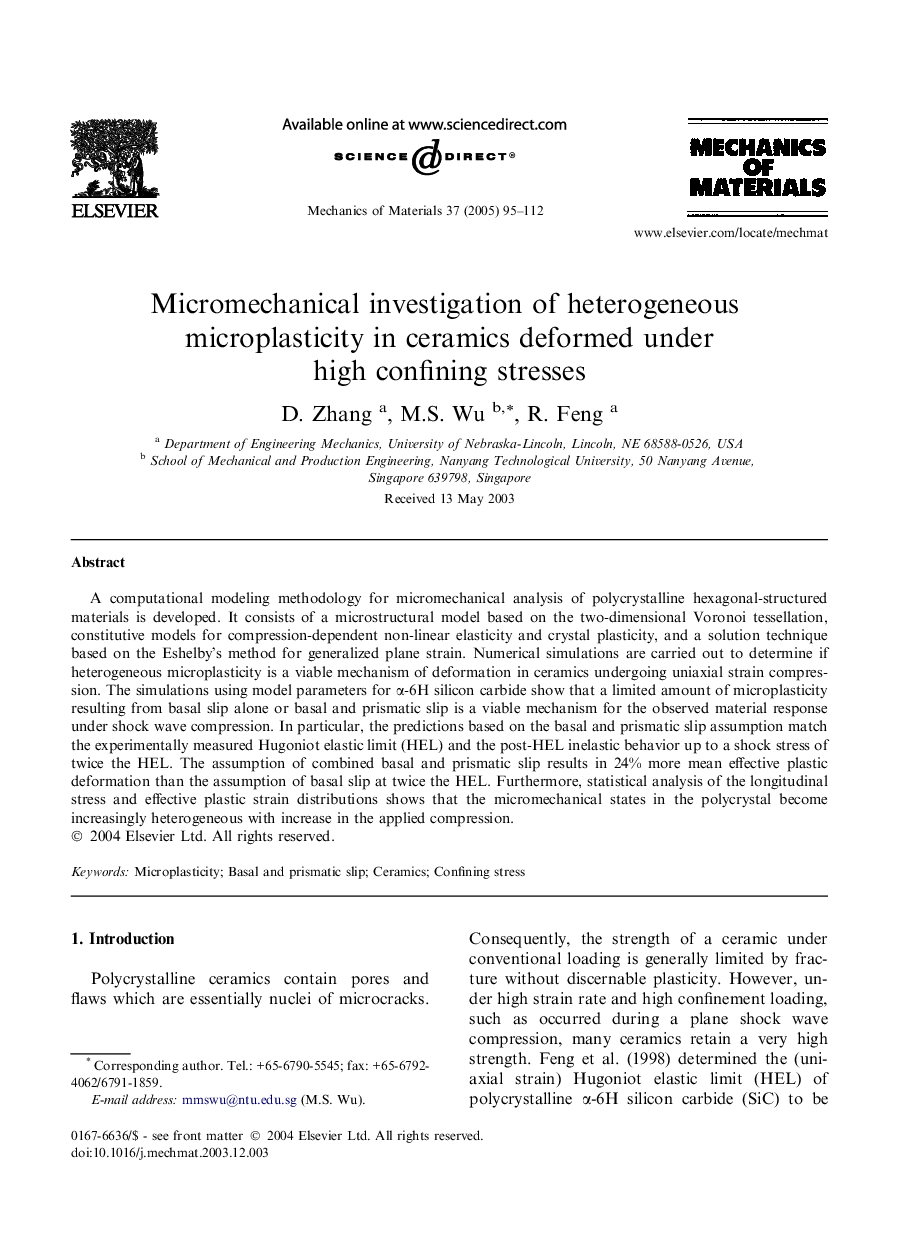| Article ID | Journal | Published Year | Pages | File Type |
|---|---|---|---|---|
| 9711680 | Mechanics of Materials | 2005 | 18 Pages |
Abstract
A computational modeling methodology for micromechanical analysis of polycrystalline hexagonal-structured materials is developed. It consists of a microstructural model based on the two-dimensional Voronoi tessellation, constitutive models for compression-dependent non-linear elasticity and crystal plasticity, and a solution technique based on the Eshelby's method for generalized plane strain. Numerical simulations are carried out to determine if heterogeneous microplasticity is a viable mechanism of deformation in ceramics undergoing uniaxial strain compression. The simulations using model parameters for α-6H silicon carbide show that a limited amount of microplasticity resulting from basal slip alone or basal and prismatic slip is a viable mechanism for the observed material response under shock wave compression. In particular, the predictions based on the basal and prismatic slip assumption match the experimentally measured Hugoniot elastic limit (HEL) and the post-HEL inelastic behavior up to a shock stress of twice the HEL. The assumption of combined basal and prismatic slip results in 24% more mean effective plastic deformation than the assumption of basal slip at twice the HEL. Furthermore, statistical analysis of the longitudinal stress and effective plastic strain distributions shows that the micromechanical states in the polycrystal become increasingly heterogeneous with increase in the applied compression.
Related Topics
Physical Sciences and Engineering
Engineering
Mechanical Engineering
Authors
D. Zhang, M.S. Wu, R. Feng,
